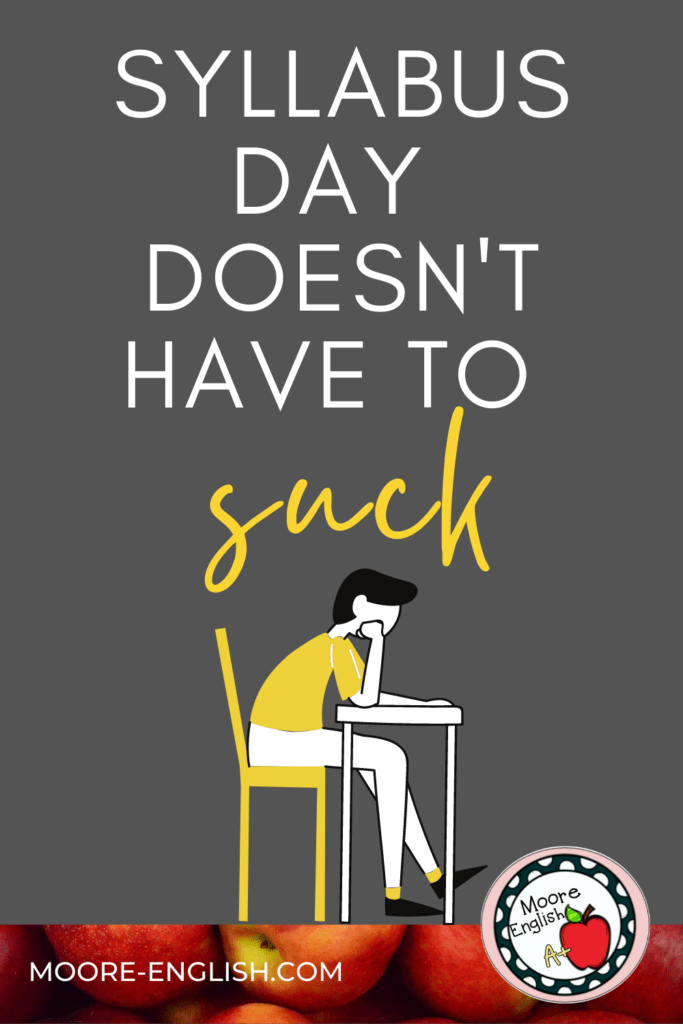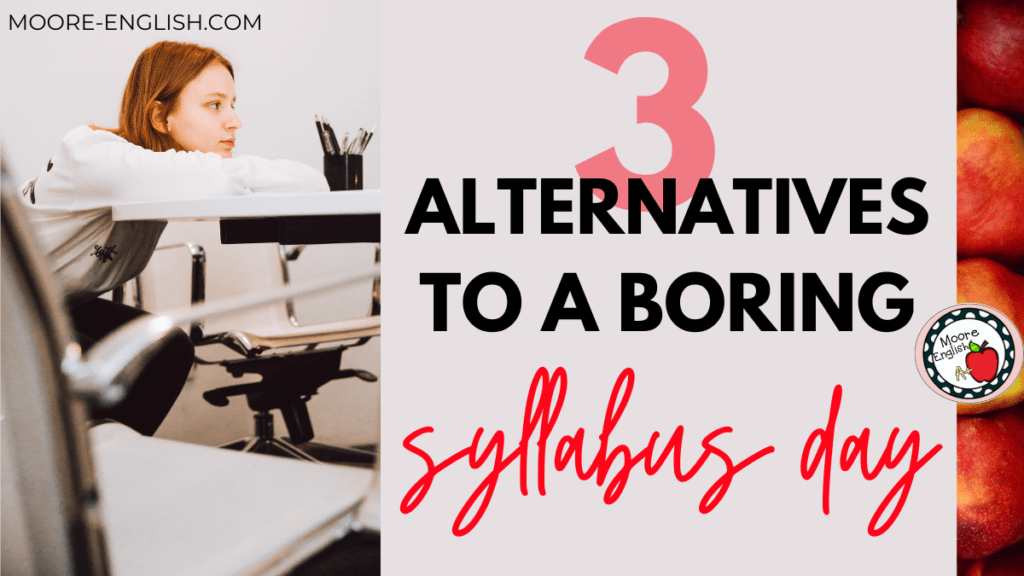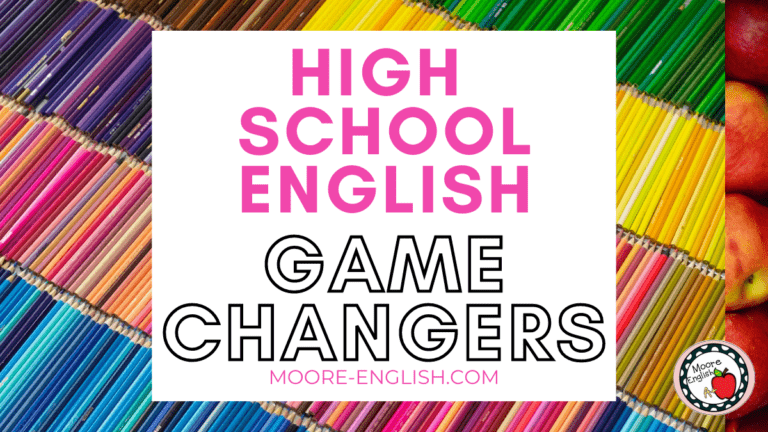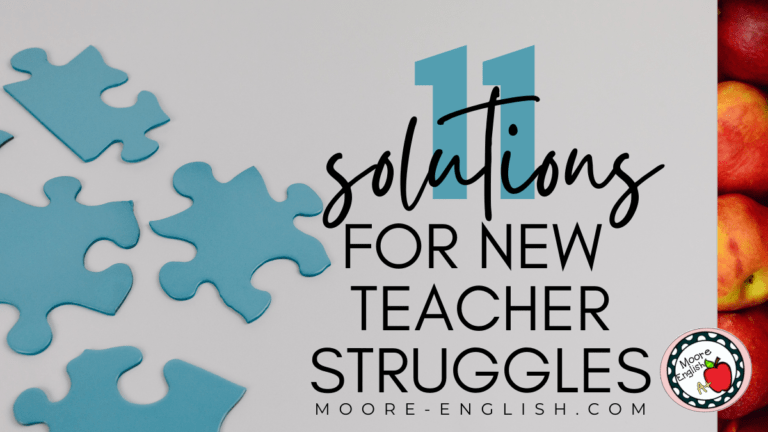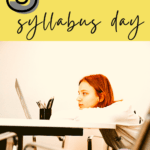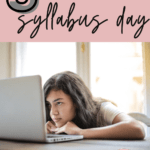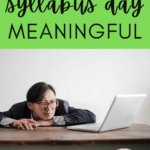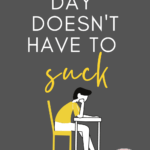The traditional syllabus is a staple in may high school classrooms. While the syllabus may seem outdated to some, it’s a requirement at my school. For that reason, I try to make the syllabus as meaningful and useful as possible.
In one page (no more), I include details about contacting me, the grading schedule, grading scale, late/absent/retake policies, and the course description. Many of these categories are requirements outlined by my administration. (Read more about syllabus design and grab a free copy of my syllabus template.)
Once the syllabus is complete, it’s time to decide how to unveil the document. Rather than a traditional, sit-and-get Syllabus Day, I have some alternatives to share!
This post this post may contain affiliate links. Please read the Terms of Use.
Delay Syllabus Day
Putting the syllabus at the front and center of the first day of school can kill momentum and engagement. Instead of emphasizing community building, suddenly you’re focusing on policies.
No one wants that.
For that reason, try not to focus on the traditional syllabus on Day One.
Ideally, that means just holding on to the syllabus to discuss it at a later day. However, if your school is like mine, you’re required to share the syllabus on the first day of school.
Even though I’m required to share the syllabus on the first day of school, I have a few options for de-emphasizing this hallowed document:
- Firstly, send the syllabus home for students to review with their families, and then ask students what questions they have the next day. If you’re concerned that students simply won’t read the syllabus, follow up with a syllabus quiz the next day.
- Secondly, provide the syllabus at Open House! Give the syllabus before the first day of school, and then you don’t have to spend time on this document on Day One. Of course, if Open House isn’t well attended, this option isn’t feasible.
- Thirdly, try de-emphasizing the traditional syllabus by making it part of back-to-school stations! The syllabus can be its own station!
Traditional Syllabus Alternative #1: Classroom Scavenger Hunt
A few years ago, administration asked my department to restructure our gradebook categories at the last minute. Knowing that we had not made a decision, when I developed and copied my syllabus, I simply left a blank pie chart on the document.
In the end, I was glad I went ahead and copied my syllabus because my department didn’t come to a consensus until the day before school started. And, at that point, the copier had a line like the DMV.
What this meant was that students simply filled in the pie chart section of their syllabus, creating a neat little listening activity to accompany the sacred reading of the traditional syllabus.
The next year I decided to leave more blanks in my syllabus, posting the answers around the classroom. Students then completed a Classroom Scavenger Hunt to fill in their syllabi. An advantage of this strategy is that students have to move around the room to find the answers. They work together and explore the space with minimal help from me. In the end, students were much more comfortable with the classroom space because they were familiar with it and knew where to find resources.
Traditional Syllabus Alternative #2: Syllabus BINGO
Last year, COVID made it difficult to repeat my Classroom Scavenger Hunt strategy. In an effort to keep everyone safe and healthy, teachers were asked to limit classroom movement, so I needed a plan to engage students in the syllabus without simply reading it to them.
For this reason, we played Syllabus BINGO. Even my high school seniors love BINGO, so this was a good way to generate some buy-in. First, students read the syllabus. Then, I read out clues while students find and write the answers on their BINGO cards. Students can keep their cards to reference later in the year.
Grab my Syllabus BINGO today!
My Favorite Option
While all of these options have worked in different circumstances, my favorite alternative to the traditional syllabus reading is to make the syllabus part of Back-to-School Stations.
With this strategy, the syllabus becomes another first-day station like joining the Google Classroom or setting classroom goals. Furthermore, stations encourage students to move around the room, becoming familiar with the environment and building community amongst themselves.
At the syllabus station, I ask students to complete a Syllabus Scavenger Hunt. With this tool, students read most of the syllabus, hitting the highlights, and working together with their stations group to find the correct answers. While I prefer to do this paper-pencil because students tend to better remember what they write, this station could easily become a Google Form.
Grab my fully editable Syllabus Scavenger Hunt! Or you can save some money and grab the Back-to-School Bundle, which features these syllabus activities and 8 more!
What are your favorite strategies for making the syllabus more meaningful?
Back-to-school is a wonderful but challenging time of year! There’s so much to balance, so let me help out by sharing some of my favorite back-to-school posts:
- Syllabus Design
- 10 Tips for New Teachers
- A Back-to-School Message
- Back-to-School Pinterest Board
- Teacher and Classroom Inspiration
- 5 Procedures Every Classroom Needs
- STOP Making these Seating Chart Mistakes
- 5 Ways to Get Students Writing from Day 1
- Successfully Planning the First 3 Days of School
- 4 Unique Writing Activities to Build Classroom Community and Culture

